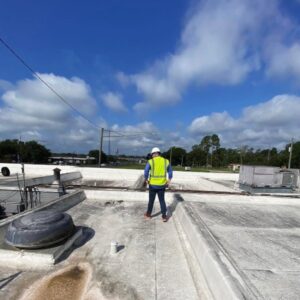
A well-maintained roof is crucial for the longevity and safety of any commercial building. Regular inspections play a vital role in identifying potential issues and ensuring the overall health of the roof. In this article, we will explore the importance of commercial roof inspections in Corinth and discuss the process, common issues uncovered, post-inspection procedures, and maintenance tips.
Understanding the Importance of Roof Inspections
A commercial building’s roof is subject to a variety of factors that can cause damage and deterioration over time. These include weather conditions, structural issues, and general wear and tear. Early detection of any problems is crucial to prevent further damage and costly repairs. This is where roof inspections become invaluable.
The Role of Roof Inspections in Commercial Buildings
In commercial buildings, roof inspections serve several purposes. Firstly, they help identify any existing or potential problems that may compromise the structural integrity of the roof. Secondly, they ensure compliance with safety regulations and standards. Lastly, by identifying issues early on, inspections can prevent major repairs or even premature roof replacement.
Key Benefits of Regular Roof Inspections
Regular roof inspections offer several important benefits to Corinth commercial building owners and property managers. First and foremost, they provide a proactive approach to maintenance, allowing for timely repairs and preventing further damage. By addressing issues early on, inspections can help extend the lifespan of the roof and avoid costly emergency repairs.
Furthermore, roof inspections can help identify and rectify any potential safety hazards. Whether it’s loose materials, exposed electrical components, or other dangers, inspections play a crucial role in maintaining a safe environment for employees, customers, and visitors. Additionally, inspections can also uncover hidden leaks or moisture problems, which, if left unaddressed, can lead to mold growth and compromise indoor air quality.
Moreover, roof inspections provide an opportunity to assess the energy efficiency of a commercial building. A well-maintained roof can contribute to better insulation, reducing heating and cooling costs. Inspections can identify areas where insulation may be lacking or where there are gaps that allow air leakage. By addressing these issues, building owners can enhance energy efficiency and reduce utility expenses.
Another advantage of regular roof inspections is the potential for early detection of pest infestations. Birds, rodents, and insects can find their way into commercial buildings through damaged or deteriorating roofs. These unwanted guests can cause damage to the roof structure and compromise the overall integrity of the building. By identifying signs of infestation during inspections, prompt action can be taken to prevent further damage and the spread of pests.
The Process of Commercial Roof Inspections
A comprehensive commercial roof inspection typically involves two main stages: the initial assessment and planning, followed by a detailed inspection and analysis.
Initial Assessment and Planning
During the initial assessment stage, the inspector will gather information about the roof’s age, previous repairs, and any known issues. This helps in developing a clear plan and identifying potential areas of concern that need closer examination. Additionally, this stage also involves evaluating the accessibility of the roof and ensuring the safety of the inspection process.
Moreover, in the initial assessment phase, inspectors may also review the building’s maintenance history to understand how well the roof has been cared for over time. This historical perspective can provide valuable insights into recurring problems or neglected maintenance issues that may impact the current condition of the roof. By taking into account the maintenance practices followed by the property owner, inspectors can better tailor their inspection approach to address specific vulnerabilities or areas of weakness.
Detailed Inspection and Analysis
Once the initial assessment is complete, the inspector will perform a detailed examination of the roof’s components, including the membrane, flashing, and drainage systems. This includes checking for signs of damage, such as cracks, leaks, or loose materials. Inspectors may also use specialized tools such as infrared cameras to identify hidden moisture issues or thermal irregularities.
Furthermore, during the detailed inspection phase, inspectors may conduct core samples to assess the condition of the roof structure beneath the surface. This invasive testing can reveal structural weaknesses, moisture intrusion, or insulation deficiencies that may not be apparent during a visual inspection alone. By delving deeper into the roof’s layers, inspectors can provide a more thorough analysis of its overall health and performance.
After the inspection, the findings are compiled into a comprehensive report that outlines any identified issues, their severity, and recommended solutions. This report serves as a valuable resource for property owners and managers to make informed decisions regarding repairs or replacements.
Common Issues Uncovered During Roof Inspections
Commercial roof inspections often reveal a variety of issues, ranging from minor concerns to more substantial problems that require immediate attention.
Structural Problems and Their Impact
One common issue found during roof inspections is structural damage. This can include sagging or bowing sections, compromised support systems, or weakened decking. Such issues can affect the overall stability of the roof and pose significant risks if not addressed promptly.
Weather-Related Roof Damage
Commercial roofs are constantly exposed to the elements, making them vulnerable to weather-related damage. High winds, heavy rain, hail, and snow can all take a toll on the roof’s surface. Storm damage may include torn or missing shingles, damaged flashing, or compromised waterproofing systems. Regular inspections help identify these issues and allow for timely repairs, minimizing further damage.
Post-Inspection Procedures
After receiving the inspection report, it is crucial to carefully review and interpret its findings to determine the necessary next steps.
Interpreting Inspection Reports
Inspection reports may include technical jargon and complex information. It is essential to work closely with a qualified professional, such as a roofing contractor, to fully understand the findings and recommended actions. They can help prioritize the identified issues and provide cost estimates for repairs or replacements.
Planning for Necessary Repairs or Replacements
Based on the inspection report, property owners and managers should develop a comprehensive plan for the necessary repairs or replacements. This ensures that the work is carried out in a timely manner, addressing any urgent issues, and preventing further damage or potential safety hazards.
Maintaining Your Commercial Roof Post-Inspection
Regular maintenance is essential to maximize the lifespan of a commercial roof and minimize the need for repairs or replacements. Here are some tips to keep your roof in optimal condition:
Regular Maintenance Tips
- Schedule routine cleanings to remove debris and prevent clogs in gutters and drains.
- Trim any overhanging branches to prevent damage from falling limbs.
- Perform visual inspections after major weather events and address any visible damage promptly.
- Keep drainage systems clear to prevent water pooling or leaks.
When to Schedule Your Next Inspection
To ensure the continued health of your commercial roof, it is crucial to schedule regular inspections. The frequency of inspections may vary depending on factors such as the roof’s age, condition, and environmental factors. Consulting with a roofing professional will help determine the optimal inspection schedule for your specific roof.
In conclusion, Corinth commercial roof inspections are a critical aspect of maintaining the integrity and safety of commercial buildings. By understanding their importance, following the proper inspection process, addressing any issues promptly, and implementing regular maintenance strategies, you can ensure the longevity and reliability of your commercial roof for years to come.
Don’t wait for minor roofing issues to become costly disasters. Protect your commercial property with the unparalleled expertise of Commercial Roofing Rana. Our Platinum-level Duro-Last roofing systems are custom-designed for superior protection, ensuring your building, and everything inside it, remains safe from water damage. Serving a diverse range of commercial clients across the Mid-South, including Tennessee, Kentucky, Mississippi, and Arkansas, our team of licensed professionals is ready to extend the life of your roof with our top-tier services. Schedule Now to secure your property’s best line of defense with Commercial Roofing Rana.
